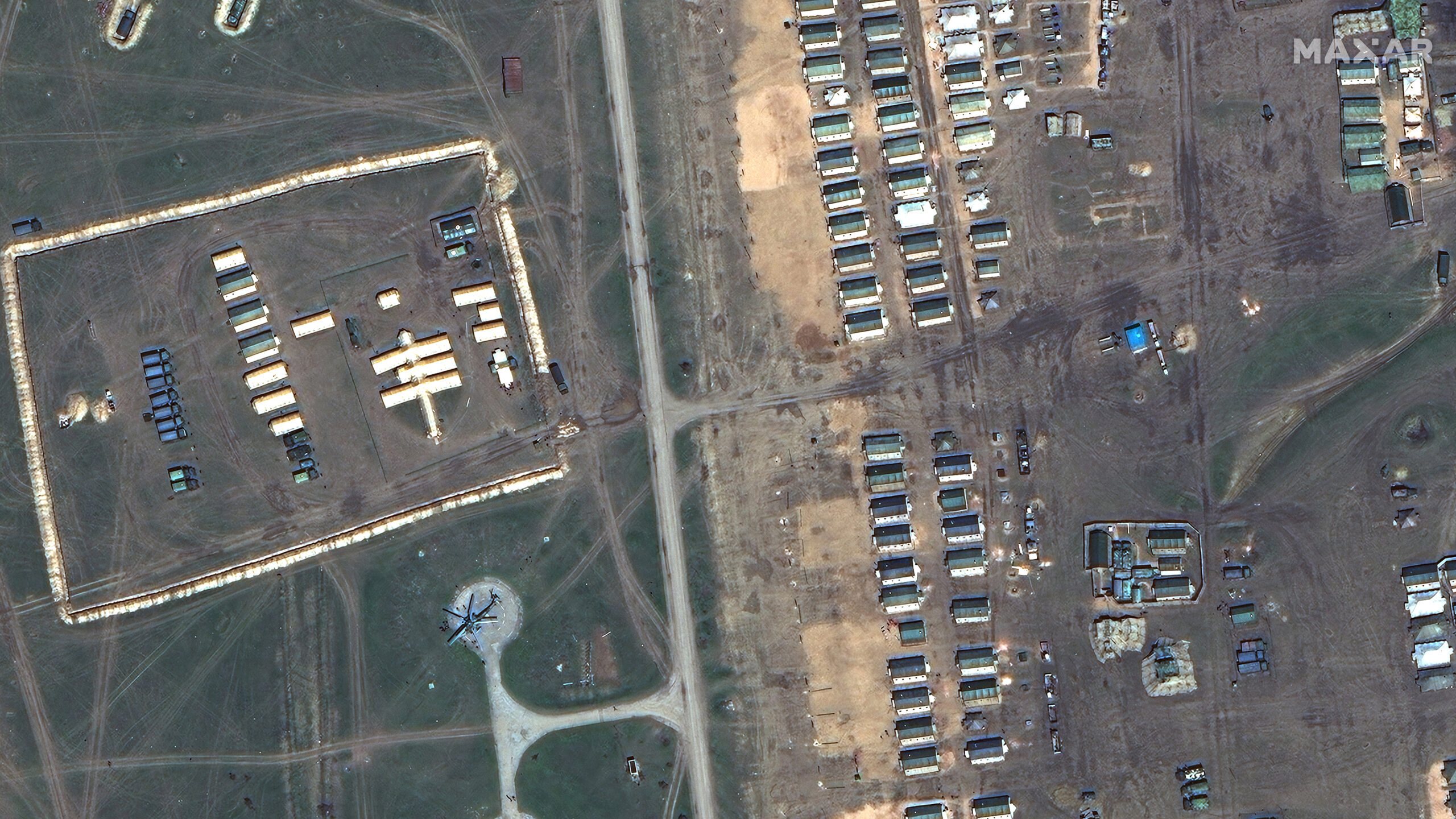
A Maxar shot shows Russian forces in Crimea. (Maxar Technologies.)
SATELLITE 2022: Concerned about their satellite networks becoming targets in conflicts as commercial imagery becomes increasingly entangled with warfighting, remote sensing firms have been initiating discussions with US government leaders about what they should do in case of adversary attack, industry representatives said today.
The increasing capabilities of companies to provide high-resolution images, rapid turn-around times and high revisit rates over a place of interest has meant that commercial firms now are being eyed as part of a so-called hybrid architecture providing the Intelligence Community and the US military with tactical intelligence, surveillance and reconnaissance (ISR). In turn, the likelihood commercial remote sensing networks might come under attack during conflicts has risen — with senior US officials last month warning firms about the potential for Russian interference with satellites providing visuals of Moscow’s ongoing invasion of Ukraine.
The new role in tactical ISR “has definitely made us more of a target,” Tony Frazier, executive vice president for global field operations at Maxar Technologies, told a panel on geospatial intelligence at the Satellite 2022 conference today. “It’s definitely something that our leadership team in our interactions with stakeholders are actively discussing.”
In a brief conversation with Breaking Defense after the panel, he noted that while the ongoing Russian invasion of Ukraine has raised the level of concern about possible attacks, it also has raised the level of attention on the issue, including among both Space Force brass and within the interagency process.
However, the question of how industry and government should respond to any attacks on satellites or their ground stations is harder to answer than it might seem, fraught with potentially negative political and economic consequences for both sides.
Further, there isn’t a formal process for reporting such attacks and/or discussing response options, industry leaders said during the panel.
“There is no 911 … for us to call to get help,” said J.R. Riordan, chief revenue officer at BlackSky. While BlackSky is “trying to make stronger doors and locks” to protect its own satellites and networks, he told Breaking Defense the worry that someone might embed a virus within one of the firm’s images that then spreads virally when someone views it is something that “keeps me up at night.”
“It’s definitely a problem,” Frazier agreed.
Blacksky, Maxar and Planet all currently provide electro-optical imagery and their analytical products to the National Reconnaissance Office (NRO). Another five companies are providing synthetic aperture radar (SAR) imagery that, unlike optical cameras, can “see” at night and through clouds: multinational firm Airbus’s US arm; California startup Capella Space; Finnish firm ICEYE’s US branch; Florida startup PredaSAR; and California-based Umbra.
And while no one will say so in public, it is clear that imagery from these commercial firms is also being shared in near real-time with the embattled government of Ukraine, as well as on a delayed basis with news media outlets around the world. Indeed, one of the key reasons NRO has been so interested in acquiring commercial imagery is exactly the ability to share it with allies and partner nations — something that cannot be easily done with images taken by NRO’s highly classified spy sats.
Frazier said that one of the things under discussion is how the US government might protect commercial operators who do become victims in warfare, noting that there are “models in other domains.” For example, the US government compensates airline firms that are tapped under the Civil Reserve Air Fleet (CRAF) program to provide airlift support to the US military — such as in ferrying evacuees from Afghanistan — if their aircraft are damaged or destroyed.
But, at the moment, such discussions are strictly informal, the industry reps said, in part because there isn’t a one-stop-shop within government responsible for the issue; rather there are many stakeholders from the IC to the services to the Department of Homeland Security that handles cyberattacks on critical infrastructure.






















